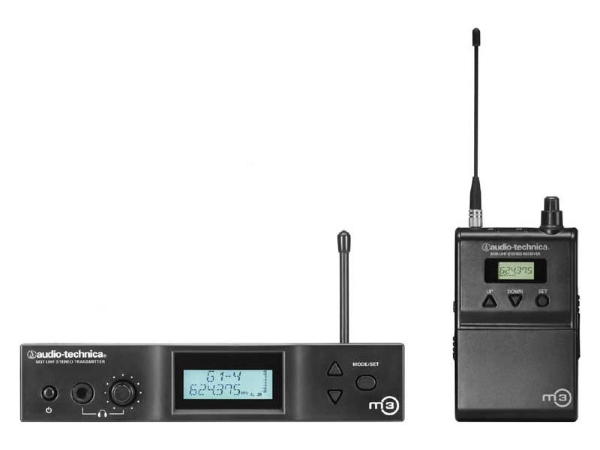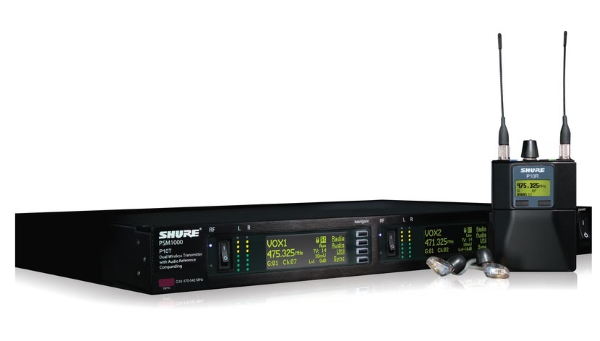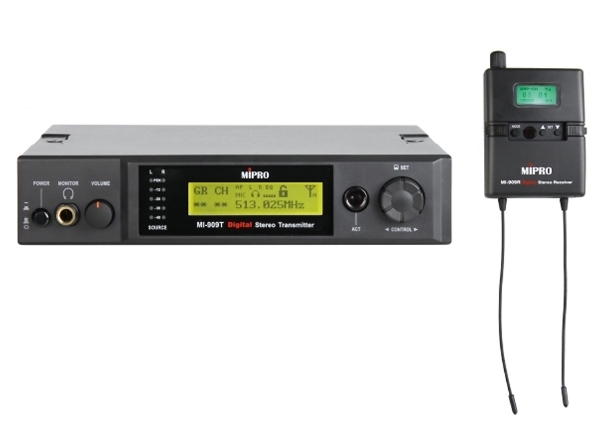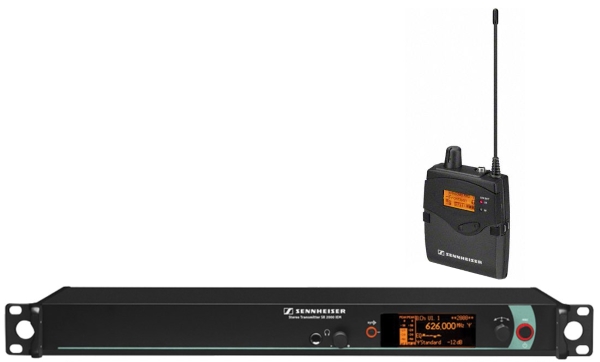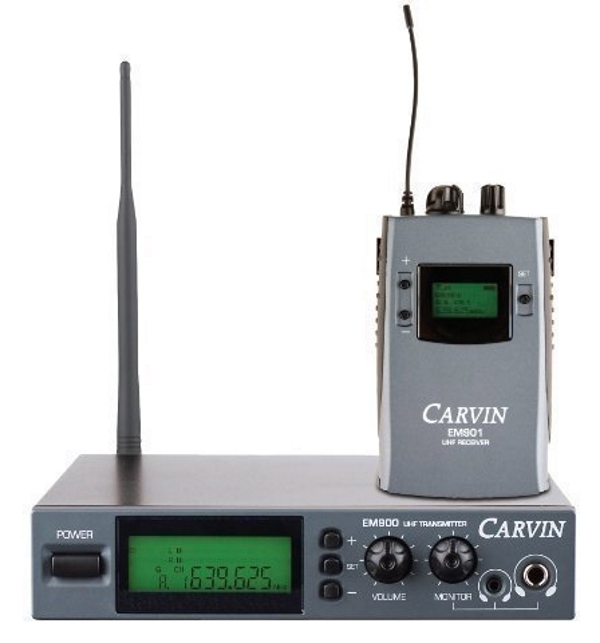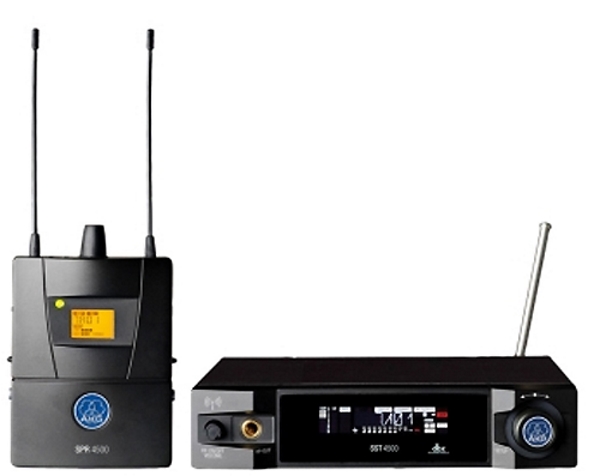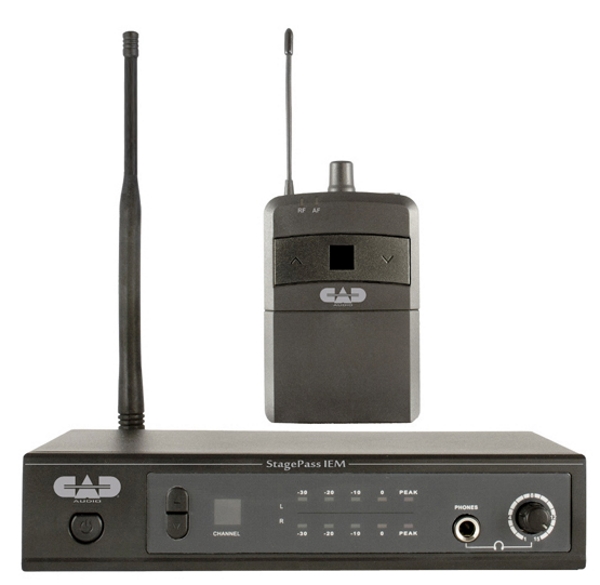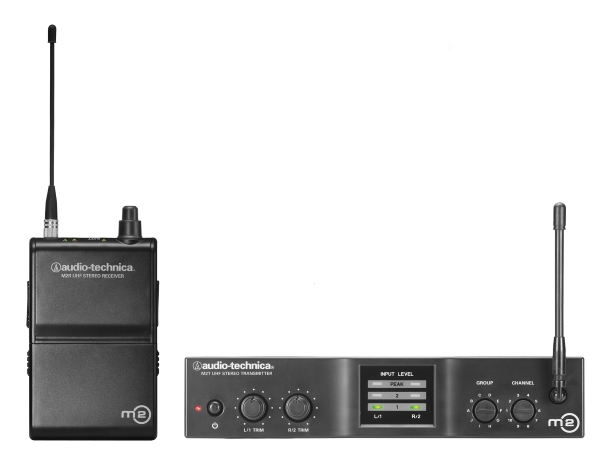Wireless in-ear monitoring (IEM) and personal monitoring systems, working with earpieces (“earbuds”), are increasingly common on stages of all stripes. Mixes can be more highly controlled, either by a monitor engineer or by personal mixing stations where the performer can select exactly what they want to hear at which relative levels, and make adjustments on the fly.
Using fewer or no monitor wedges lowers the overall level coming off the stage into the house. Also, either having no wedges on stage or keeping them at lower levels helps with gain-before-feedback as well as mic isolation.
Personal mixers allow musicians to select and custom-mix 16 channels or more (discrete channels or sub-mixes) of digital audio from all available channels, adjust levels, pan, EQ and effects for each channel, plus save and recall presets of previous mixes. These systems are increasingly sophisticated, and in many cases offer the ability to interface with a wide range of networking protocols.
Meanwhile, wireless IEM systems provide additional freedom of movement while retaining a clean, consistent monitor mix. Note that as the term “wireless” makes clear, the systems use RF spectrum, so they need to be coordinated along with wireless mic, instrument, and intercom systems at every show.
These systems are noted for providing quality transmission, offering convenient setup and use with auto-sync functionality between transmitters and receivers — and in many cases, frequency agility. Transmitter power is often selected at two or three different settings. Some also offer an additional input for a click track or ambient mic.
There’s a lot of variety and flexibility in the world of personal and wireless in-ear monitoring. Enjoy this tour of recent systems, followed up with a focus on earpieces.
—————————————
Wireless IEM Systems:
Audio-Technica M3
audio-technica.com
Components: M3T transmitter and M3R receiver
RF Power: 10/50 mW, switchable
Audio Power: 65 mW at 32 ohms
Frequency Groups (U.S.): 575–608, 614–647 MHz
Tuning Range: 1,321 selectable frequencies
Receiver Batteries: 2 x AA alkaline
Of Note: Automatic frequency scanning; volume and mix control of two independent signals; any number of receivers can operate on same frequency with single transmitter; limiter (defeatable) helps protect from sudden peaks; up to 16 simultaneous systems per frequency band
Shure PSM 1000
shure.com
Components: P10T dual-channel transmitter, P10R receivers
RF Power: 10/50/100 mW (U.S.), switchable
Audio Power: 100 mW (per output) at 32 ohms
Frequency Groups (U.S.): Several bands within 470–690 MHz; also 944–952 MHz (X1 band in U.S.)
Tuning Range: 72 – 80 MHz (region dependent)
Receiver Batteries: 2 x AA batteries or SB900A lithium-ion rechargeable battery
Of Note: Networked control via Ethernet simplifies setup and enables remote control via Wireless Workbench software; backwards compatibility with PSM 900 receivers; CueMode allows monitoring of different stage mixes and storing up to 20 channels on a bodypack
MIPRO MI-909T/R
mipro.com.tw, avlex.com
Components: MI-909T transmitter and MI-909R receiver (digitally-encrypted)
RF Power: 10/100 mW, switchable
Audio Power: 120 mW at 16 ohms
Frequency Group (U.S.): 480–604 MHz
Tuning Range: 64 MHz
Receiver Batteries: 2 x AA alkaline
Of Note: Menu settings for input sensitivity, encryption, and EQ; auto-scanning for interference-free frequencies; dual-antenna diversity; selectable HI, LOW or OFF (mute) output power; up to 16 compatible channels within the same frequency group
Sennheiser SR 2000 IEM
sennheiserusa.com
Components: SR 2000 transmitter, EK 2000 IEM receiver
RF Power: 10/30/50 mW; XP-Version is 100 mW, maximum
Audio Power: 100 mW at 32 ohms
Frequency Groups (U.S.): Three bands within 516–698 MHz
Tuning Range: Up to 75 MHz; up to 3,000 frequencies
Receiver Batteries: 2 x AA alkaline or BA2015 rechargeable pack
Of Note: Choice 26 frequency banks with up to 32 channels; unit can be synchronized with receiver using infrared interface; monitoring and control available through Sennheiser Wireless Systems Manager PC software
Carvin Audio EM900
carvinaudio.com
Components: EM900 transmitter, EM901 receiver
RF Power: 10/50 mW, switchable
Audio Power: 100 mW
Frequency Group (U.S.): 518–542 MHz
Tuning Range: 960 selectable frequencies
Receiver Batteries: 2 x AA Alkalines
Of Note: Four groups of 16 presets; -10 dB input level switch; effects inserts to allow external processing; built-in limiting; HF boost setting; lockout mode prevents accidental setting changes; Phased Locked Loop (PPL) technology enhances signal connection
AKG IVM4500 IEM
akg.com
Components: SST4500 transmitter, SPR4500 wireless receiver
RF Power: 10/20/50/100 mW, switchable
Audio Power: 150 mW at 16 ohms
Frequency Groups (U.S.): Four bands within 500–680 MHz
Tuning Range: 30 MHz, 1,200 selectable frequencies
Receiver Batteries: 2 x AA alkaline, lithium (FR6), BP 4000 battery pack or Ni-MH rechargeable
Of Note: Built-in effects (i.e., dbx compressor and EQ); preset channel groups; frequency swap to listen to audio signals of different channels; optional network remote control via PC, iPhone/iPad/iPod, and Soundcraft Vi consoles
CAD Audio StageSelectIEM
cadaudio.com
Components: StagePass transmitter and receiver
RF Power: 30 mW
Audio Power: 100 mW at 32 ohms
Frequency Groups (U.S.): 470–498 MHz
Tuning Range: 16 frequencies
Receiver Batteries: 2 x AA alkaline
Of Note: Proprietary CADLock Automatic Tone Code Squelch helps eliminate interference; stereo operation, send discrete signals to the left or right channel; includes antenna relocation kit
Audio-Technica M2
audio-technica.com
Components: M2T transmitter and M2R receiver
RF Power: 10 mW/30 mW (switchable), 50 ohms
Audio Power: 65 mW at 32 ohms
Frequency Groups (U.S.): 575–608, 614–647 MHz
Tuning Range: 100 selectable channels
Receiver Batteries: 2 x AA alkaline
Of Note: Three receiver modes: personal mix, stereo, and mono; personal mix control allows volume and mix control of two independent signals at the receiver; 3.5 mm line-in jack connects to ambient mic, click track and more; up to 10 simultaneous systems per frequency band



